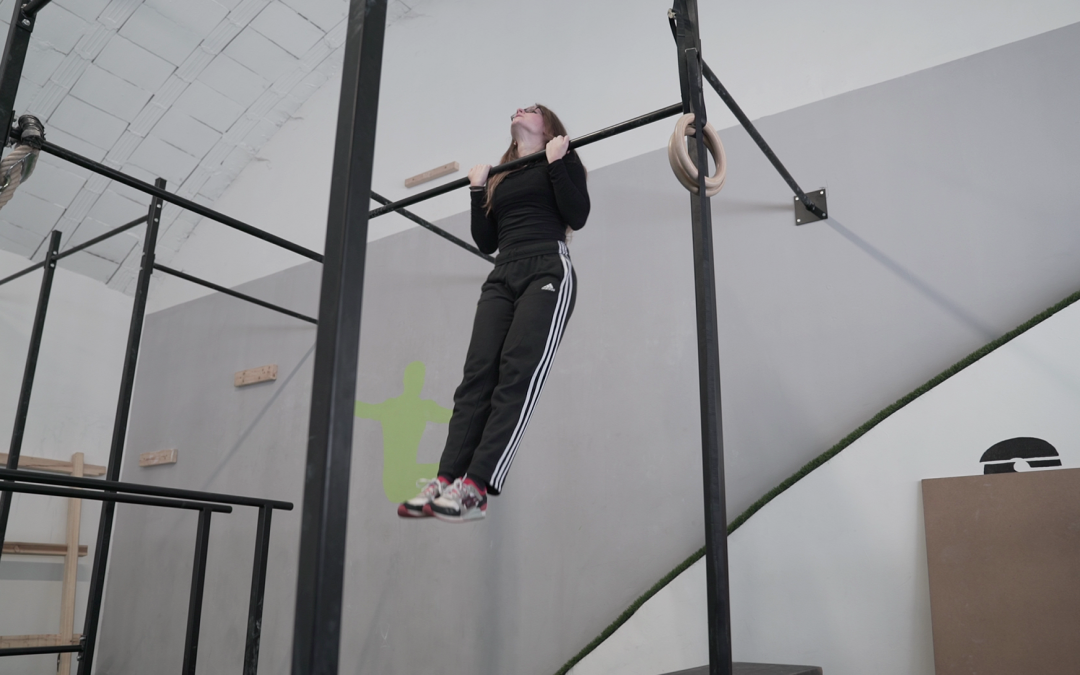When it comes to training programming, different methods have been employed in the history of Strength Training to generate positive adaptations and elicit improvement in terms of strength outcomes of an athlete 1. What seems to be clear is that certain training variables may affect the results of different training units, leading to a complex interrelation that has to be taken into account by the coach when drafting individualised programmes 2.
Matter of this discussion will be therefore providing a literature review on how this process can be conducted, using, depending on the circumstances, a more structured or auto-regulated training protocol 1,3,4. Thus, in an attempt of determining those scenarios in which one may be more effective than the other, pinpointing the reasons behind it.
In periodized protocols, the number of repetition per set, the number of sets, the recovery or the kilograms lifted are only some of those required to generate the expected adaptations 3.
If these elements are stimulated to the right degree and in the correct manner, they are capable of increasing the performance 4. On the other hand, failing to match these criteria can result in stagnation of the athlete’s progression or produce detrimental effects on the body 4.
From the first understanding of those principles that lay underneath the training process, the most crucial variables can be optimally structured in a training programme. Ideally, this should be implied to avoid a flawed random organization of a session. Thus, promoting instead a reasoned long-term development 5.
As a matter of this fact, various are the techniques commonly implemented in a Strength and Conditioning setting to ensure a stable progression of the athlete1. Linear, undulating, block periodization (just to name a few), comprise the core of reference for any S&C coach.
Even if it is true that to a certain degree a body response to training can be predicted, a project plan written prior its implementation may need further improvements along the way; so that the results both match the athlete’s expectations and satisfy the coach’s guidelines 1,6.
Periodized training (PT) is a methodology that allows a reasoned athlete’s progression in a strength development context so that almost every detail of the training is planned in great advance for a long period of time 7.
PT has been vastly adopted in rehabilitation scenarios to guide the injured athletes toward a successful return to their standard training regime, providing valuable elements for what concerns the exercise progression and the specific attention required by the athlete 8. In addition to this, it appeared to better guide the training novices; acknowledging them in the process.
When implementing Periodized Training in a Strength and Conditioning context, various authors were inclined to suggest that this methodology is somehow superior to that of non-periodized training (NPT) programmes 9. Thus, as the organization of long-term programmes was frequently adopted to predict the athlete’s performance for competition purposes 3.
Surely, this methodology needs to be cautiously implemented to prevent either the elicitation of excessive fatigue or the lack of an adequate training stimulation 10.
Autoregulation refers to an approach that can be implemented by the athlete while progressing with the training: a mechanism that allows a better control of the variables involved in the success of a specific session (fatigue levels, lack of sleep, stress etc), leaving more space and freedom to the athlete performing it 4. This does not have to be intended as a random organisation. On the other hand, it needs to be considered as the maximal exemplification of individualised training 4. No programme is structured in advance, and the expertise of the athlete, jointly with his readiness, can modulate and direct the exercises’ execution towards fruitful results 8.
Autoregulation was at first proposed as a system by DeLorme in 1945 and since then popularized by Sif 11. The idea behind the method is to consider the number of repetitions that the individual is capable of performing at a certain intensity in a single day and, from there, calculate the workload. Doing so, fatigue and readiness levels affecting the workout can be appropriately adjusted; avoiding the mere distribution of a rigid programme schedule 12. This allows a greater flexibility of the volumes and intensities of a training within a single session; more in line with the state of the freshness of an individual.
On the downside, if the athlete is not able to adequately estimate the training buffer (e.g. novices or beginners), the whole system breaks. Therefore, autoregulation requires a minimum range of expertise to be correctly implemented 13.
Nowadays, some technological devices (i.e. Gymaware) are available to visualise in a quantitative manner, the athlete’s effort during a session, focusing on the velocity of the repetition performed 14. However, in order to obtain accurate measures, the individual needs to focus on performing a fast concentric action; having a good technique; make sure not to skip any session and constantly be auto-motivated 15.
Periodized Training and Autoregulation have been compared in the literature for what concerns Strength Training, underlining the following outcomes: “autoregulatory progressive resistance exercise was found to be more effective at improving bench press strength, squat strength, and upper body endurance in trained athletes over a six weeks period” 16 and to provide “small advantage in lean mass accretion and upper body strength in strength-trained males” 17. On the other hand, others underline little to no difference between the two training methods 12. Thus, probably underlining that none of these methodologies is absolutely better or worse, but just that they can be more suitable for different goals and levels of expertise of the athlete.
In order to obtain more standardized values in future research, more attention should be directed on the choice of the samples, specifically considering untrained people and women.
Summing up, even though the outcomes of various studies seem to suggest the implementation of PT over NPT programmes and the dominance of autoregulation over PT in trained individuals, loads has still to be done in the Strength and Conditioning field to determine the de-contextualized and absolute supremacy of one method over the other.
References
1 Feigenbaum, M., & Pollock, M. (1997). Strength Training. The Physician And Sportsmedicine, 25(2), 44-64
2 Turner, A., & Comfort, P. (2018). Advanced strength and conditioning: An Evidence-based Approach
3 Lorenz, D., & Morrison, S. (2015). Current Concepts in Periodization of Strength and Conditioning for the Sport Physical Therapist. International Journal of Sports Physical Therapy, 10(6), 734–747
4 Verkhoshansky, Y., & Siff, M. (2009). Supertraining. Rome, Italy: Verkhoshansky.
5 Kornspan, A. (2009). Fundamentals of sport and exercise psychology. Champaign, IL: Human Kinetics.
6 NSCA Strength and Conditioning Professional Standards and Guidelines. (2009). NSCA. Retrieved 25 March 2018, from https://www.nsca.com/Education/Articles/S-C-professional-standards/
7 Fleck, S. (1999). Periodized Strength Training: A Critical Review. The Journal Of Strength And Conditioning Research, 13(1), 82
8 Hoover, D., VanWye, W., & Judge, L. (2016). Periodization and physical therapy: Bridging the gap between training and rehabilitation. Physical Therapy In Sport, 18, 1-20
9 Rhea, M., & Alderman, B. (2004). A Meta-Analysis of Periodized versus Nonperiodized Strength and Power Training Programs. Research Quarterly For Exercise And Sport, 75(4), 413-422. http://dx.doi.org/10.1080/02701367.2004.10609174
10 Issurin, V. (2010). New Horizons for the Methodology and Physiology of Training Periodization. Sports Medicine, 40(3), 189-206
11 Mann, B. (2011). A Programming Comparison: The APRE vs. Linear Periodization In Short Terms Periods (PhD). Faculty of the Graduate School at the University of Missouri-Columbia
12 Fraser, J. (2018). A comparison between a traditionally periodised programme and a load autoregulated periodised programme for maximal strength gain in the squat, bench press, and deadlift in weight-trained males (Master Of Science). Massey University, Manawatū, New Zealand
13 Eston RG, Wiliams JG. Reliability of ratings of perceived effort regulation of exercise intensity. British Journal of Sports medicine. 1988;22:153–155. Available at: https://www.ncbi.nlm.nih.gov/pmc/articles/PMC1478740/
14 Jovanović, M., & Flanagan, E. (2014). Researched Applications Of Velocity Based Strength Training. Journal Of Australian Strength And Conditioning, 22(2), 58-69
15 Kawamori, N., & Newton, R. (2006). Velocity Specificity of Resistance Training: Actual Movement Velocity Versus Intention to Move Explosively. Strength And Conditioning Journal, 28(2), 86.
16 Mann, J., Thyfault, J., Ivey, P., & Sayers, S. (2010). The Effect of Autoregulatory Progressive Resistance Exercise vs. Linear Periodization on Strength Improvement in College Athletes. Journal Of Strength And Conditioning Research, 24(7), 1718-1723.
17 Rauch, J., Ugrinowitsch, C., Barakat, C., Alvarez, M., Brummert, D., & Aube, D. et al. (2017). Auto-regulated exercise selection training regimen produces small increases in lean body mass and maximal strength adaptations in strength-trained individuals. Journal Of Strength And Conditioning Research, 1.


Recent Comments